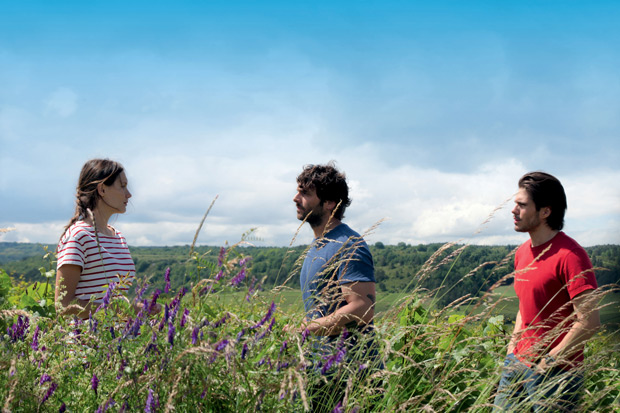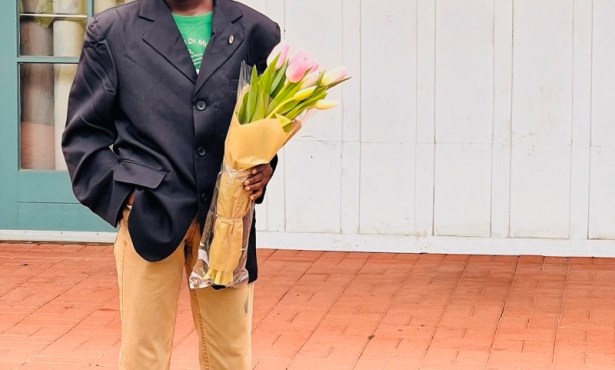‘Back to Burgundy’
Director Cédric Klapisch

American wine lovers would give anything to run their own Burgundian domaine. But this engaging, entertaining, and oenologically correct feature film shows why that may not be the case for people who grew up in the vineyards and simply had to get out as they got older.
This French family drama portrays a son who’s returned home after many years to help his siblings determine what to do with their winery and vineyards as their father lay dying. As they work through the harvest — portrayed with stunning accuracy, as are all the conversations and observations made about wine in the film — the siblings grow closer to each other and the land.
It’s easily the best feature film about wine since Sideways, and many will argue that it’s far better than that.
What inspired this film? I worked many years (almost 10) before I started to write the story. I knew I wanted to talk about wine but I didn’t have a story in particular. Since I’m a real Parisian, I needed to research in order to be accurate about winemakers and winemaking.
I interviewed over 40 winemakers during several months. I did a little documentary about the harvest in 2010. I spoke with several notaries to know more about heritages in Burgundy and family affairs. I worked as a journalist, almost, to find material for a story.
A lot of people told me some very intimate and personal things about their families.
After a while some similar stories came up. Almost every young person had spent time abroad, working as an apprentice in a wine estate (in California, in Australia, in Chile, in Argentina, in South Africa, etc.)
I realized the new generation traveled the world a lot. Working with organic methods was also very important for all of them. I decided to talk about this new generation. So that’s really how the story started.
I wanted to make a movie that talked about wine, and I very soon understood that it needed to be about family, transmission, heritage, time passing …
I chose to have three youngsters as main characters — the three siblings are between 25 and 30 years old — and I used what people had told me.
Jean-Marc Roulot, who plays Marcel the vineyard worker in the movie, was a big source of inspiration. He is probably the only winemaker in France who is also an actor. He became very important as a “technical consultant.” Jean-Marc helped a lot both for technical aspects of the winemaking process and also for intimate and family things.
He told me that his father died when he had just finished his acting studies, and he had to choose [when he was] around 25 years old if he should sell his prestigious land and wine estate in Meursault or if he should try to keep it and then try to keep two different jobs.
Is the exodus from rural areas a major issue in France, even in legendary places like Burgundy? Yes and no. People leave Burgundy to go to Paris or abroad a lot. But very often people do come back to their homeland.
It’s probably the same for people living in the countryside in America — even if they’re attracted by going away to city life, there is always an attraction to go back where you come from.
What is true is that in 1900, 90 percent of the population lived in the countryside. After 2000, 10 percent of the French population lives in the countryside. The urban way of life has won.
The film is incredibly accurate when it comes to winemaking. How did you get it all so right? In many ways, this movie is very hybrid in terms of mise en scène. I mixed documentary techniques with fiction-filmmaking techniques.
The harvest is partly documentary, but in some scenes I would mix the actors with the real harvest people. Jean-Marc had a crew of around 30 young people doing the harvest who accepted to be extras — they had a double salary; they loved it! And for scenes very choreographed or with specific dialogue, I had to cast “fake” harvest people who were really actors.
Depending on the scenes, I would use the real harvest team or the fake one. So Jean-Marc was always the consultant for me and also for the actors. In order to be accurate, it’s a question of right gestures or attitudes.
The main thing for me in this movie was to be realistic and naturalistic. It’s a lot about nature and very often it was really the nature that was running the show and the planning.
The choice of shooting during one year to show the four seasons is a good example of that. We shot 12 weeks altogether, so approximately three weeks in each of the four seasons. In October, the crew was waiting in Paris to know when the wine leaves would turn yellow and red.
How has the film been received in France, and in Burgundy specifically? It worked really well in France: 750,000 viewers. We are among the 10 best results for French movies this year.
I think people appreciated a lot to have a movie that talks about brotherhood and the meaning of fraternity in a family. I think the audience appreciated also a lot to have a movie about the French identity where you both laugh and cry.
In Burgundy and in every wine region in France, like Bordeaux, it was a tremendous success. It’s a story that is very emotional for the people who work around vineyards; people then identify with it a lot, and it’s very strong for them.
I’ve just won a prize recently. I got the man-of-the-year award from La Revue du vin de France, which is the main wine magazine here in France.
The film was acclaimed by over 500 winemakers that day, which was really important to me. It said that the film is really meaningful and authentic for them.



